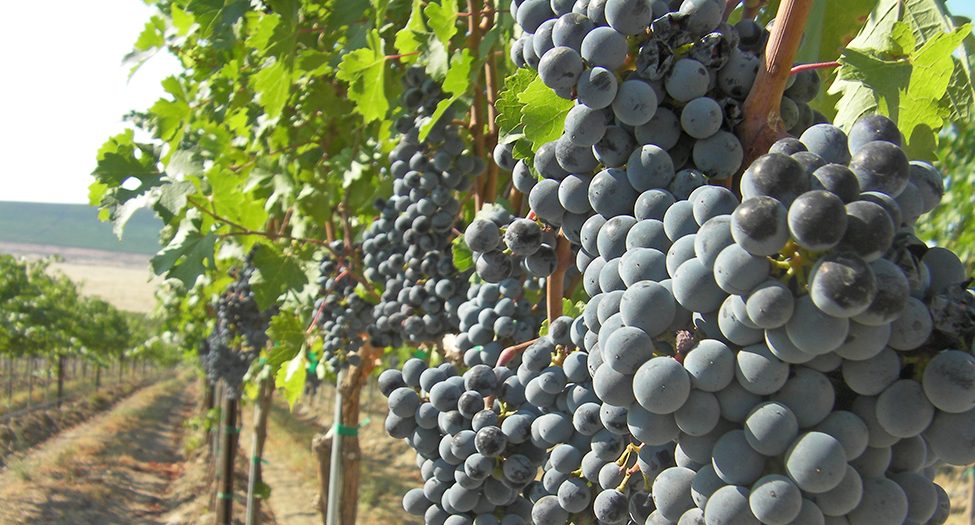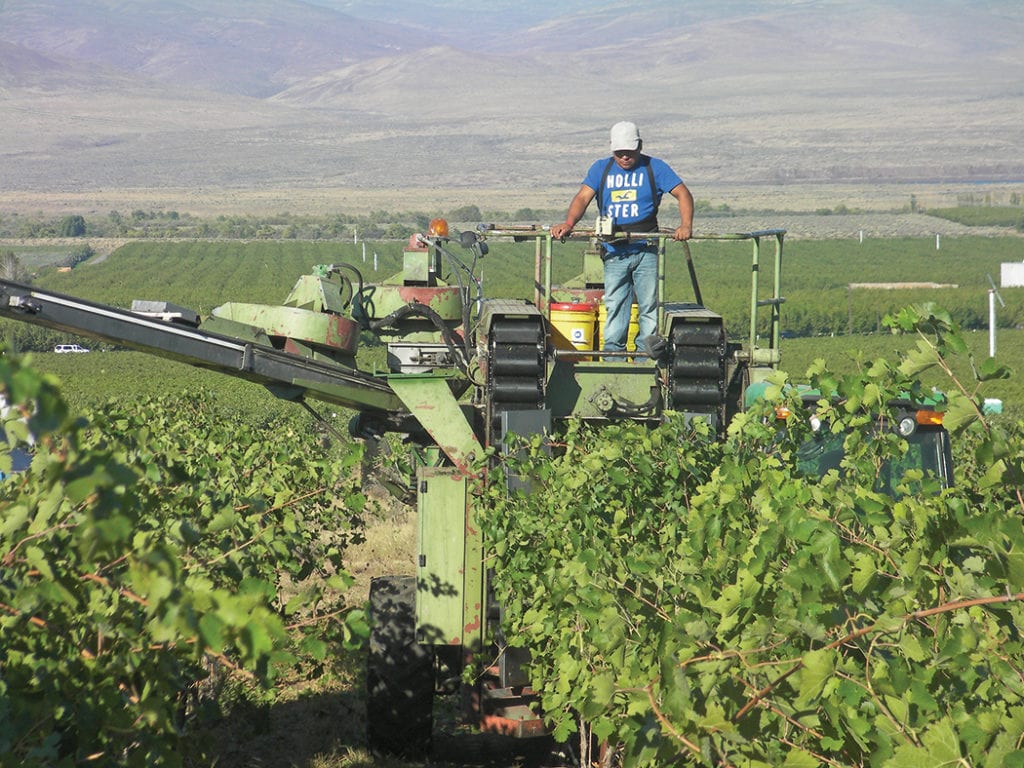
Home » Fine vines: Wine industry has come into its own
Fine vines: Wine industry has come into its own

June 12, 2019
By Andy Perdue
When a young grapevine begins growing in the sandy soils of Washington’s Columbia Valley, it takes a few years to establish itself and build a foundation of strong roots before producing fruit.
After a period known as the juvenile
years, the vines mature, and with the right care and coaxing, they will produce
wines with the potential for greatness.
The past two decades have been that period
of maturing, and now the hard work is paying off with an industry that is
beginning to reveal its full potential, just as mature vines can.
Twenty years ago, the Washington wine
industry was in a juvenile stage. In the mid-’90s, it was spunky with ambition
and 300 wineries scattered across both sides of the Cascade Mountains and a few
thousand acres of vineyards, primarily within an hour’s drive of the
Tri-Cities.
Today, the Washington wine industry is on the verge of boasting 1,000 wineries, 58,000 acres of vineyards, 15 federally-recognized American Viticultural Areas, and a reputation for quality that far exceeds the boundaries of the Pacific Northwest.
Washington stands
firmly in second place in U.S. wine production, well behind California in
production, if not fame. Washington makes 7 percent of the nation’s wine. Some
in the Golden State have taken notice and have invested in Washington wine.
Meanwhile, the Washington wine industry is
going so strongly, it’s on the verge of displacing apples as the state’s most
important agricultural industry, said Steve Warner, director of the Washington
Wine Commission in Seattle.
The state apple industry is worth about
$2.4 billion, while the wine industry is worth about $2.1 billion, Warner said.
He estimates the wine industry will overtake apples in the next 12 to 18
months.
In an ironic twist, two older, larger
vineyards in Finley were recently sold and the vines torn out to make way for
Cosmic Crisp, a new apple variety that is scheduled to go into the retail
market this fall.
Why is it important
that wine becomes our leading agricultural industry, supplanting apples?
Washington wine has slowly been making its reputation on the world wine stage,
not only for quality but for value. Taking its place ahead of apples means more
attention from our leaders in Olympia, as well in the other Washington. And
this could spur more attention for growth opportunities, more support from
within the state to bring more tourism, more jobs.
Earlier this year, California wine giant
Gallo bought Hogue Cellars in Prosser, one of the state’s top 10 producers from
Constellation Brands, which bought Hogue in 2005. Constellation, based in New
York, still has a large stake in Washington, having bought Charles Smith Wines
in Seattle in 2016.
The Hogue acquisition expands Gallo’s
Washington footprint. The Modesto-based company bought Columbia Winery in
Woodinville in 2012, giving the longtime winery a brand makeover, expanding
production and increasing distribution nationwide. Putting Hogue on a similar
path isn’t unexpected.
“The force of Gallo on not only the
national but the international stage out there saying that Washington wines are
amazing and, to the point that they’re adding to their portfolio, I think
that’s a win,” Warner said. “Gallo is engaged in our marketing programs locally
and nationally. So I think it’ll be a positive move for us.”
Not every California winery to come to
Washington is a mega-producer, however. In 2013, Napa Valley darling Duckhorn
Vineyards decided to create a Washington brand, called Canvasback.
Duckhorn, started in 1976, has serious
winemaking chops, with its 2014 Merlot named No. 1 wine in the world by Wine
Spectator magazine.
Duckhorn came to Washington intent on
creating a luxury brand based on cabernet sauvignon from Red Mountain. It
planted 20 acres of grapes high up the slope of Red Mountain, bought grapes
from top Red Mountain vineyards and hired a local winemaker to produce the
wines in Walla Walla.
What the folks at Duckhorn found in
Washington was ample, affordable land, plentiful water, abundant sunshine and
friendly, helpful people, a combination not often found in Napa Valley.
What started as one wine sold in every
state has been expanded to 10 wines that will be released over the next year.
The winery also opened a tasting room south of Walla Walla near
Milton-Freewater, Oregon.
The quality of wines has not only driven
increased production of its Washington wines, but also the expansion of the
brand and tasting room, said Carol Reber, senior vice president of marketing
for Duckhorn.

“The wines that are coming out of
Washington overall are remarkable, noteworthy and wines of distinction,” she
said.
“But the wine
community in Washington is really special and something that we’re excited to
be a part of. When you go to a new place you get a real feel for the people and
the level of excitement and the level of wanting to work together to bring
something special to the rest of the country and perhaps the rest of the world.
And that feeling is really palpable in Washington,” Reber said.
The new wines, she pointed out, will be
sold primarily to wine club members and tasting room visitors, with little
going into general distribution.
Known as “direct to consumer,” this
segment of wine sales is key to winery success. The more wine a winery sells
direct to consumers, the more money and profit a winery keeps versus selling
through a distributor for retail stores or restaurants.
Currently, wineries
sell about 77 percent of their wine directly to consumers. That means a lot
more profit going to small business owners. Part of this is helped by the state
Legislature, which now allows a winery to have up to four tasting rooms. This
means a winery could have a presence in Seattle, Spokane, Leavenworth and in
the Tri-Cities, with more opportunities to sell directly to consumers.
All of this adds up to mean that
Washington’s wine industry still has room to grow, regardless of the 1,000
wineries.
It all begins with the grapes, that raw
material that goes into making the wine.
Washington has no
shortage of sunshine, no shortage of space and no shortage of water. Getting
ripe isn’t an issue, not with the warm summers and temperate falls. Consistency
is key to winemaking success, and that is plentiful in the Columbia Valley.
Retired Ste. Michelle CEO Ted Baseler
believes Washington has the capacity for 200,000 acres of vineyards.
With that in mind, there’s much more room
to grow.
Where will all this wine be sold? A lot of
it stays in state and a lot is sold throughout the country. And a surprising
amount is going to export markets.
Washington wine, it turns out, is big
business beyond our borders.
Canada is a big market, which makes sense.
Washington wine ends up in Europe. Asia is big for red wines right now. South
Korea, it turns out, has a thirst for Washington wines. Sales there have grown
200 percent in the past three years, turning South Korea into Washington wine’s
No. 1 international market.
The Wine Commission in
Seattle helps wineries work through the process of exporting, especially to
Korea, Japan and China.
Warner now has 40 Washington wineries
exporting internationally. These wineries are doing the heavy lifting, plowing
the road for future wineries.
“If your strategy is to compete in or be
known as one of the better or the best or one of the top wine regions in the
world, you’ve got to compete on the global stage,” Warner said. “And so we’re
taking who wants to be out there and competing and creating opportunities.”
All of this means bright opportunities for Washington wine moving forward.
Andy Perdue, editor and publisher of Great Northwest Wine and
founding editor of Wine Press Northwest magazine, is the wine columnist
for The Seattle Times.
Agriculture + Viticulture
KEYWORDS focus agriculture viticulture 2019





